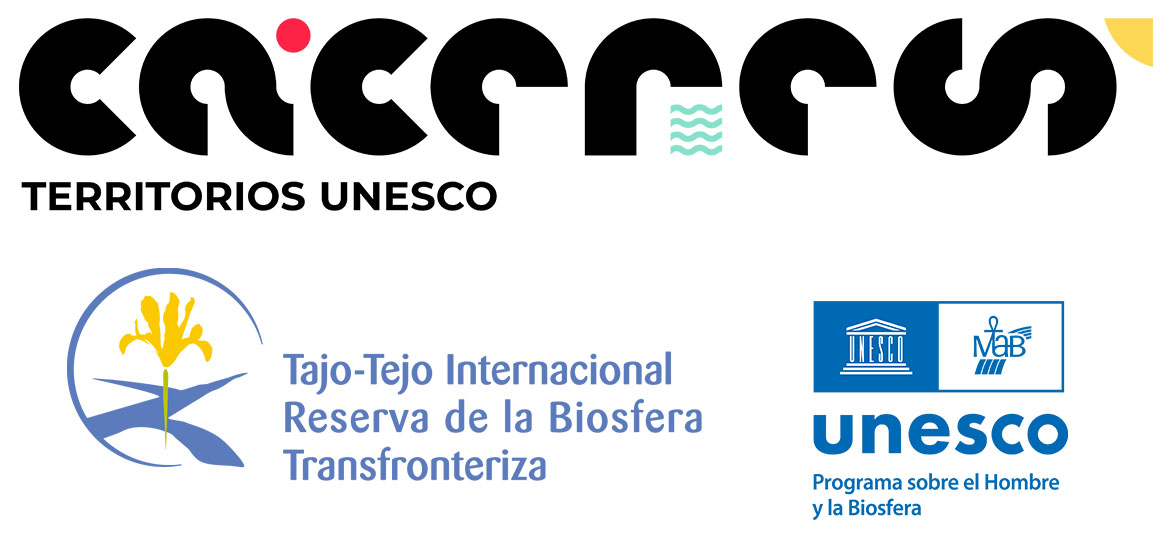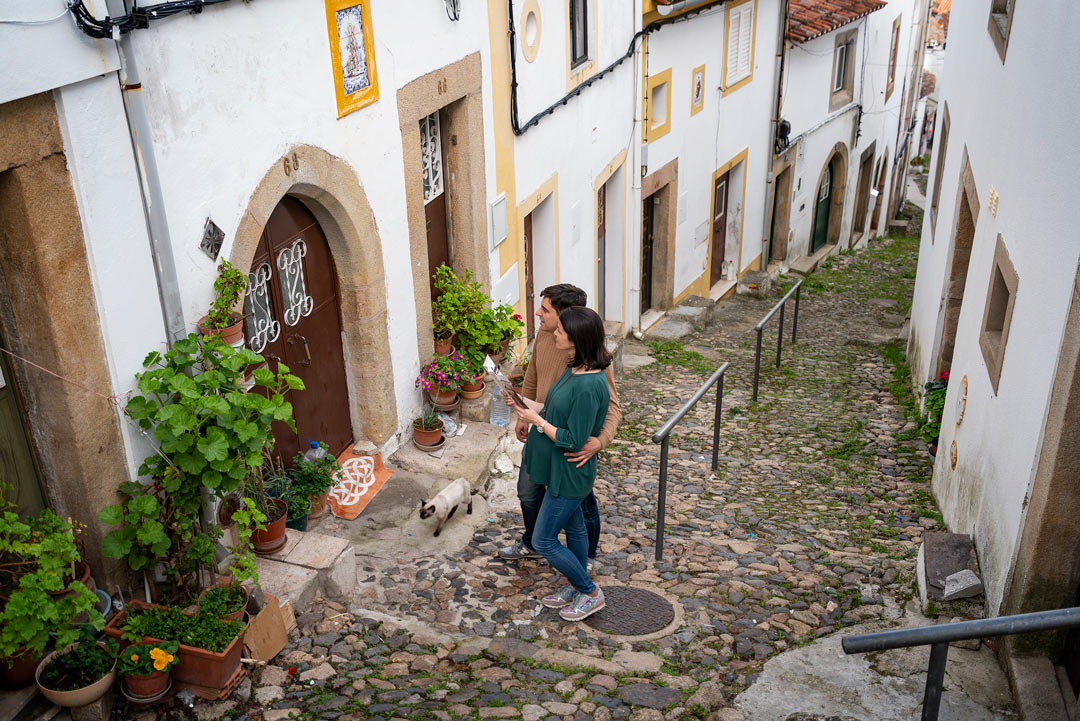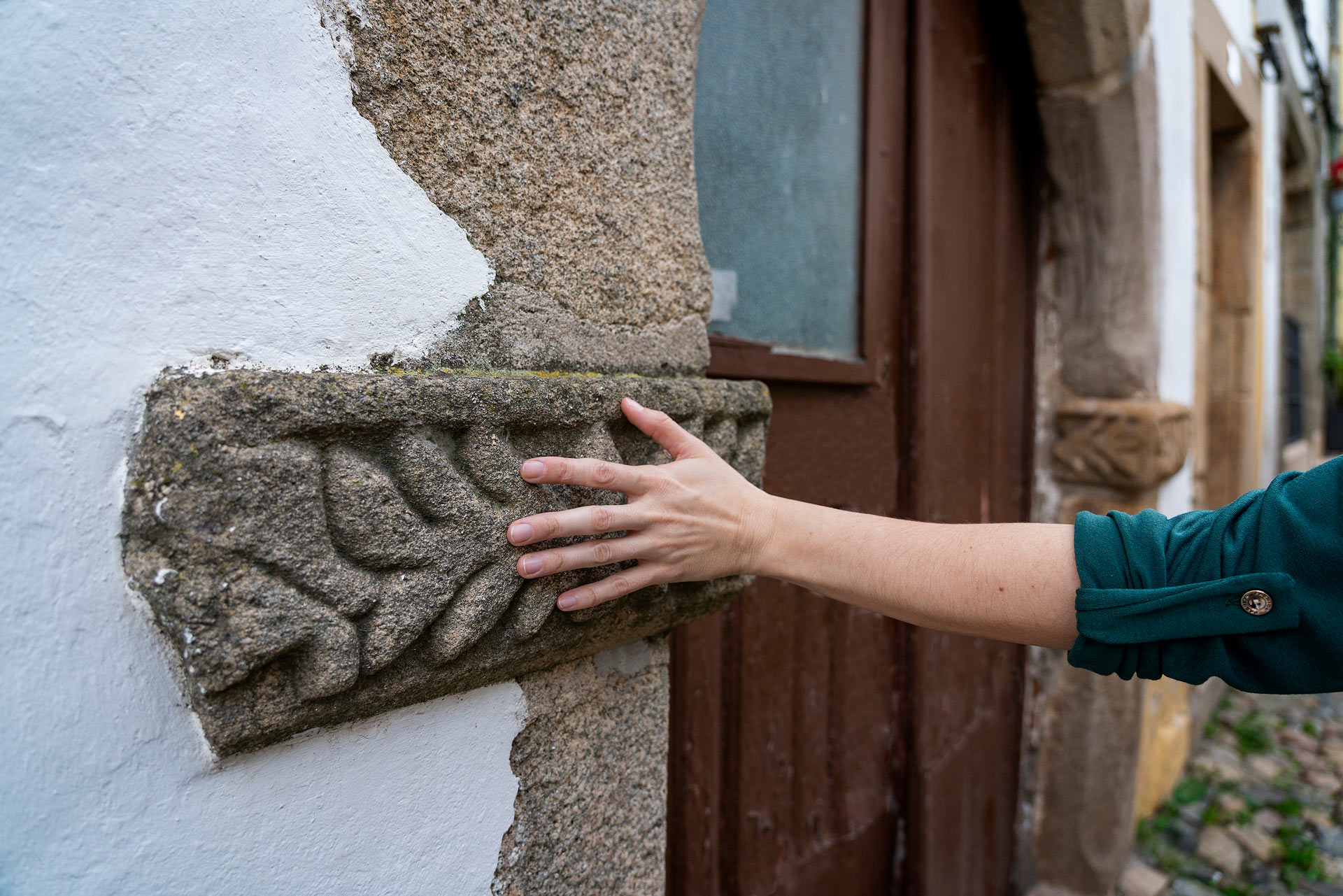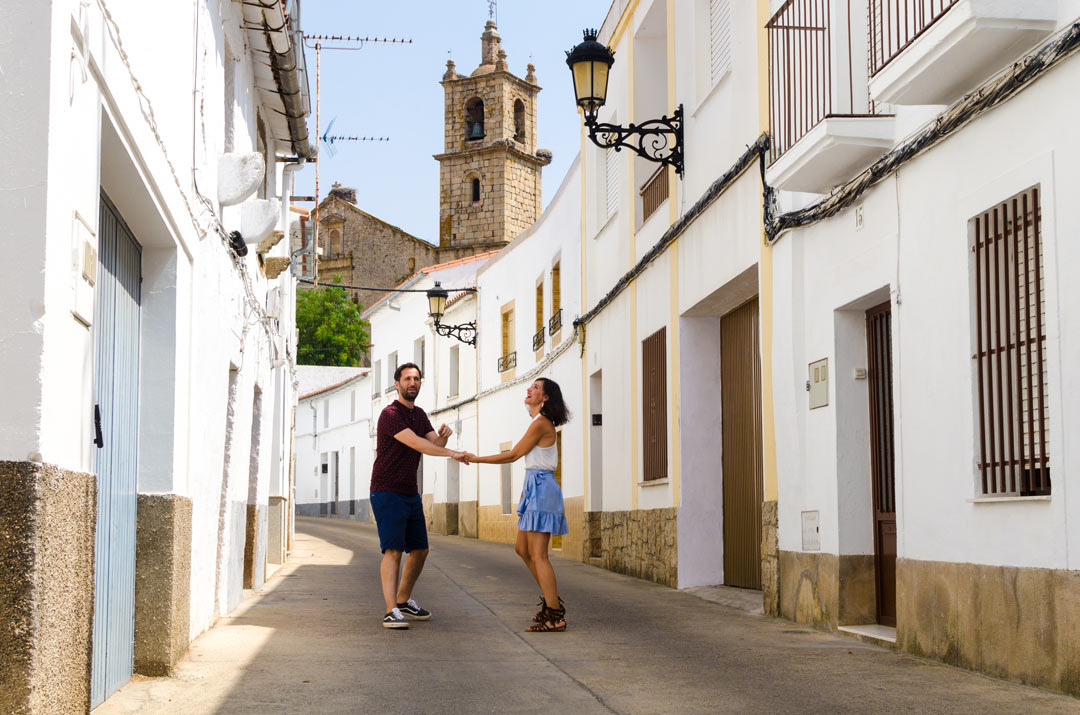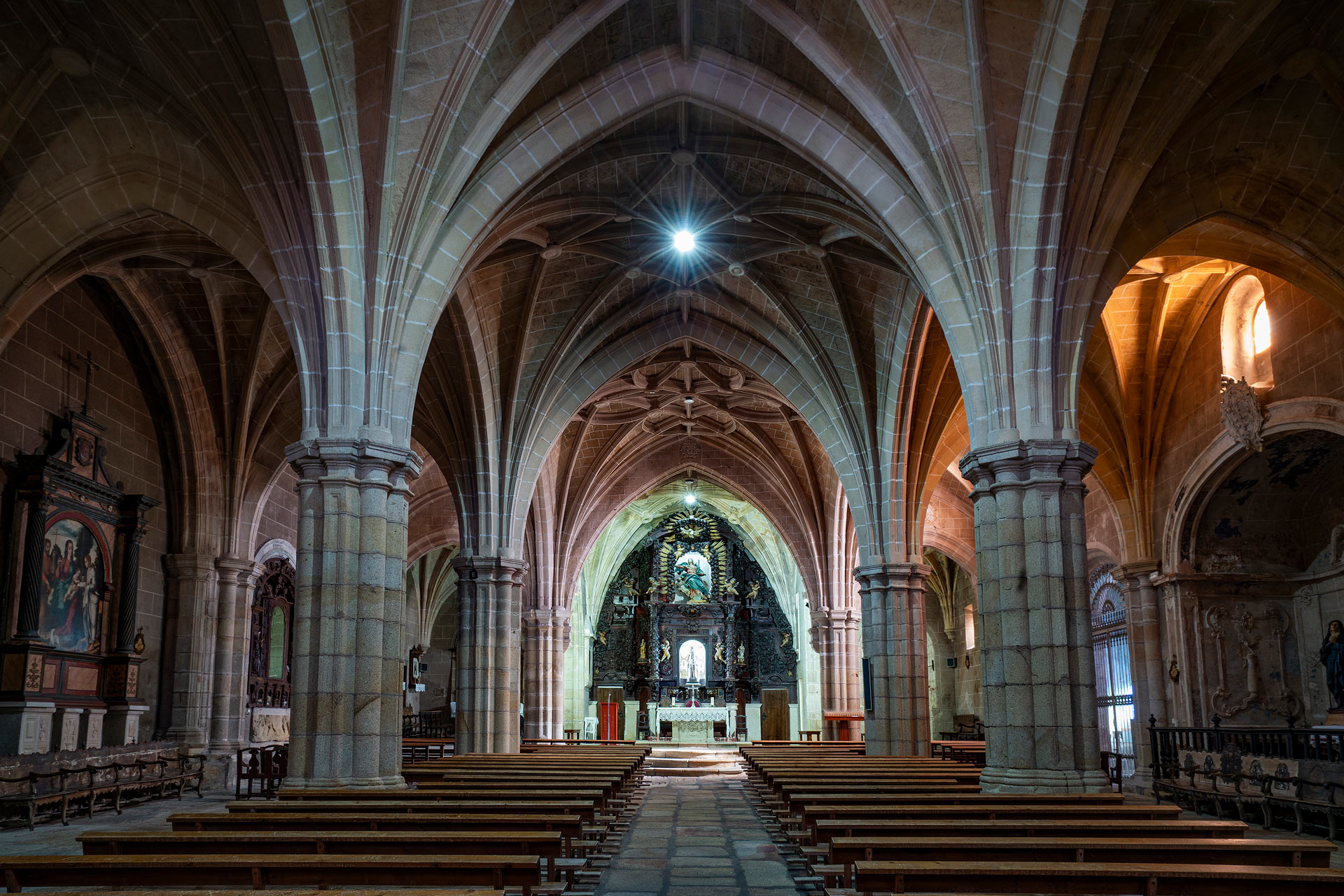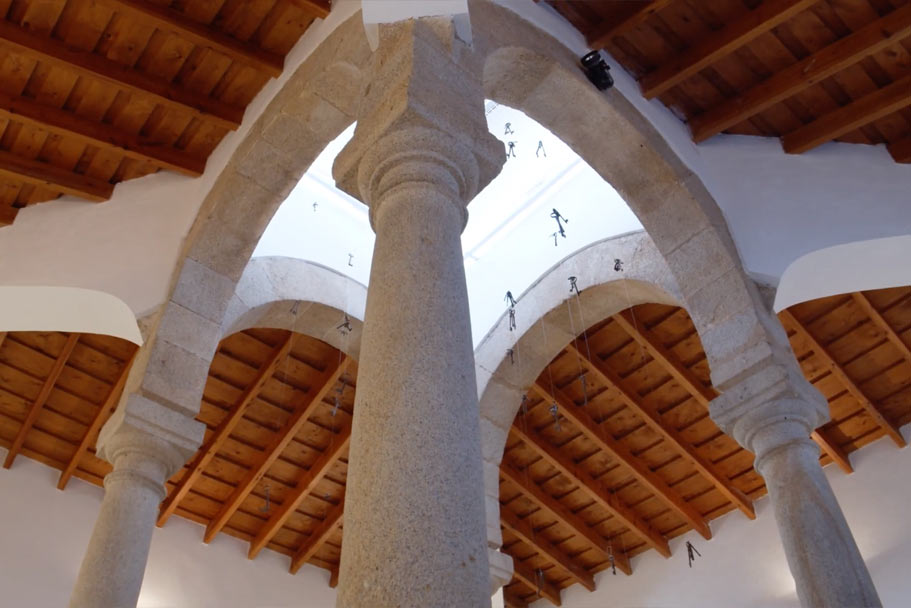The Sephardic treasures
of Tajo Internacional
Do you really know the importance of the Sephardic culture in the Iberian Peninsula? Well, the area along the frontier which separates Extremadura and Portugal was a noted enclave for the flourishing of Sephardic culture and its treasures. Valencia de Alcántara and Castelo de Vide are fine examples of Jewish architecture on both sides of La Raya.
Alleyways, pointed arches, houses on two storeys, and synagogues constitute evidence of the presence of the Jews in the Iberian Peninsula. Come and explore this melting pot of cultures on a unique journey.
A little history
It was 1492 when thousands of Spanish Jews were expelled from Castile. Many Sephardis moved from Extremadura to Portugal and settled in the towns, villages, and hamlets of La Raya. Under this premise, if we stroll in the paved streets of Castelo de Vide and Valencia de Alcántara it is not hard to imagine this exodus of 500 years ago when Jewish refugees found shelter in these lands.
Let yourself be charmed by the Sephardic culture of Castelo de Vide
It is worth mentioning that this town has won numerous awards for its cleanliness and its flower-bedecked streets
Castelo de Vide is one of those magical places which you come across unexpectedly on the border between Spain and Portugal. It is 20 minutes by car from Valencia de Alcántara on the N-521 road.
You can’t miss the castle or the hamlet it has sheltered for several centuries or other Sephardic treasures. Now is when you will discover those traditional streets of whitewashed houses and doorways with pointed arches. The street up to the castle is certainly a steep one but when you reach it the effort will have been worthwhile. What you will find is a fortress with a village inside it, a veritable labyrinth of alleyways decked with flowers which give the place a most pleasant aroma. It is worth mentioning that the town has won numerous awards for its cleanliness and its flower-bedecked streets.
Continue on your way down the hill which leads to the synagogue. This building is now a two-storey museum which portrays the daily life of the Jews of Castelo de Vide. It also honours the memory of all those who were put to death by the Spanish Inquisition.
Valencia de Alcántara, the largest jewish quarter
in the province of Cáceres
At the northwest part of the castle a medieval ensemble survives which is popularly known as the Gothic Quarter
The town of Valencia de Alcántara is another of the Sephardic treasures of the Tajo Internacional Biosphere Reserve. It is on the N-521 on the western edge of the province near the Portuguese border. At the northwest part of the castle a medieval ensemble survives which is popularly known as the Gothic Quarter. It is an interesting testimony of the presence of this culture in the Iberian Peninsula which should not be missed. Its origin dates from the 13th century or earlier and marks of Christianisation can be seen on the houses. Indeed the feared Inquisition reached these lands as can be seen from the stone known as the Piedra de Armas in Calle Bórdalo. The medieval synagogue is situated where Calle Gasca meets Calle Pocito.
This building, which dates from the 14th or 15th century, does not appear to be excessively religious but it has been established that one of the entrances permitted Jews to pray facing the wall which is orientated towards the southeast where the Ark was placed. On the side of this wall some rocks can still be seen forming a wall which according to the Jewish tradition has not been whitewashed. It should be mentioned that this synagogue follows the typical construction model of Sephardic religious buildings; it was also a place of passage for the thousands of Jews who were making for Portugal in their exodus of 1492.
How can a Sephardic house be recognised?
A typical Jewish house is characterised by having two outside doorways, normally of granite; one was for business activities and the other gave access to the living space via a stairway. On these pointed arches sculpted symbols can still be seen on the right-hand threshold; these are the “mezuzot” (the plural of “Mezuzah”), a distinctive sign of the Hebraic cult. It was here that a parchment was placed as a sign of the faith.

